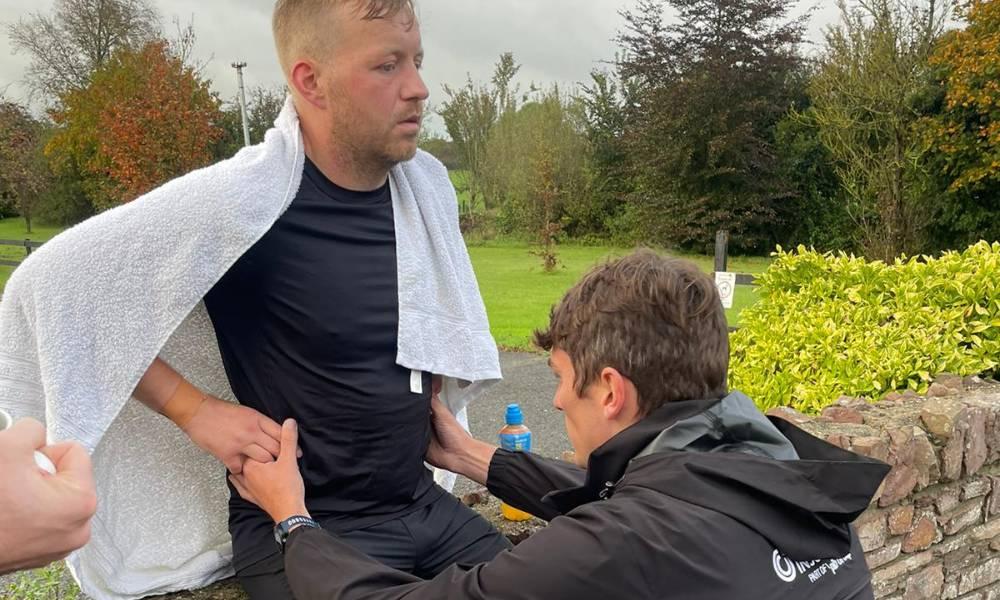Running is made popular by its relatively low barrier to entry: most people have a pair of shoes to run in, and a road nearby to run on. On the other hand, the skill ceiling in running is varied and high. At all points of one's journey, preventing and treating injuries is paramount.
In this series, we discuss all things injury and recovery with trusted experts and provide you with a guide to avoiding the common injuries running can cause. In this article, we talked to the physios of Peter Ryan who ran 586km earlier this year to raise vital funds for the NCBI.
Firstly, I wanted to identify what the common injuries are for runners before we tackle how to stay fit and avoid injury. I spoke to Physio Gavin Smith and former physio Eddy O'Byrne, who were both a huge part of the crew that helped Peter Ryan on his Malin to Mizen run, to learn more.
Gavin told me what injuries he sees most commonly with runners: 'Most runners would complain of tight calves, shin issues, knee pain, or hamstring tightness. Hip flexors, glutes, groin and lower back can also be an issue.
'Tendinopathies such as with the achilles and knees can be common due to hard surfaces and repeated exposure running.
Knowing the areas that are prone to injury for runners is important if you’re looking to start running yourself this coming year. Knowing how to avoid it is even more important. ‘How do we combat this? We combat this through strengthening our general muscles but also building our joints. Regular stretching to increase mobility and reduce muscle tightness.’
'Strengthening shins, calves, hamstrings, quads, glutes, lower back, core and hip flexors are all important in running.'
Strength and conditioning is the key. Simple things like stretching when you exercise is a great way to keep pain at bay. Gavin also outlined the importance of warm-ups and cool downs when you start and finish a run, recommending foam rolling as part of the cool down.
Another physio I spoke to, Eddy O’Byrne, told me that ‘Usually, these injuries come on when people do too much too soon and are increasing their training volume too quickly. If you’re increasing your training by more than 20% per week, that can lead to injury. Aim for 10% - 15% increase at a maximum to avoid injury.’
You can find previous articles and more information about running related injuries in our very own Run Republic Physio Corner!
In the next article, I will look at how to properly return from an injury and how to avoid it happening again.
Featured Image: Former Physio Eddy O'Byrne works on Peter Ryan during his Malin to Mizen Ultra Run.
